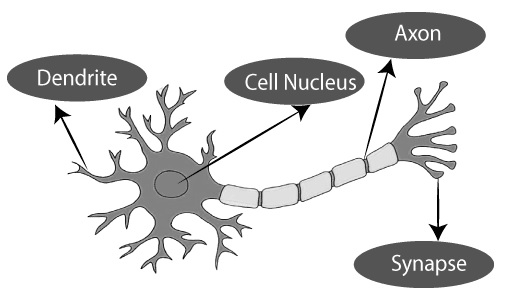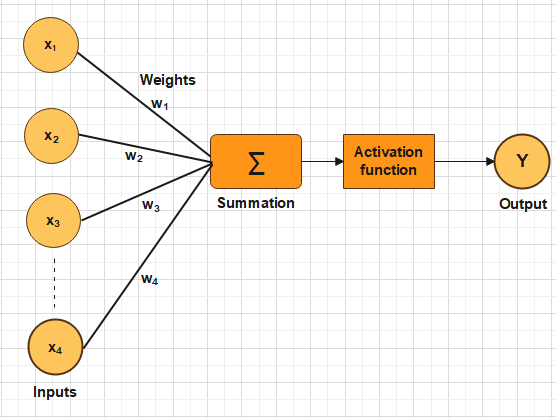- History of ANN
- ANN: Definition
- Advantages of Neural Networks
- Basic Models of ANN
- Important Terminologies of ANNs
Artificial Neural Network
Definition of Artificial Neural Network
The term "Artificial Neural Network" is derived from the structural development of biological neural networks, which resemble the intricate organization of the human brain. Artificial neural networks, akin to the human brain, exhibit interconnected neurons distributed across multiple layers within the network structure.
The Artificial Neural Network is inspired from human brain and imitates the structure of human brain. The human brain comprises of biological neurons. Artificial neural networks, akin to the human brain, exhibit interconnected neurons distributed across multiple layers within the network structure. These neural cells are commonly referred to as nodes.

ANN is also analogous to the human brain. The analogy of different components is shown in the following table:

- Input Layer: This layer receives input data, which could be numerical values, images, audio, or any other form of information. Each input is represented by a corresponding neuron.
- Hidden Layers: These intermediate layers exist between the input and output layers and perform computations on the input data. Each neuron in a hidden layer receives input from the neurons in the previous layer and passes its output to the neurons in the next layer. Hidden layers allow the network to learn complex representations and patterns in the data.
- Output Layer: The output layer produces the final results or predictions based on the computations performed by the previous layers. The number of neurons in the output layer depends on the specific task the neural network is designed to solve. For example, in a classification task, each neuron in the output layer may represent a different class label.
During the training process, an ANN learns by adjusting the weights associated with each connection between neurons. This adjustment is done through a process called backpropagation, where the network compares its output to the desired output and updates the weights accordingly. The objective is to minimize the difference between the predicted output and the actual output, allowing the network to make accurate predictions on new, unseen data.
Artificial Neural Networks have been successfully applied to various domains, including image and speech recognition, natural language processing, time series analysis, robotics, and many other tasks that involve pattern recognition, classification, regression, and optimization.

